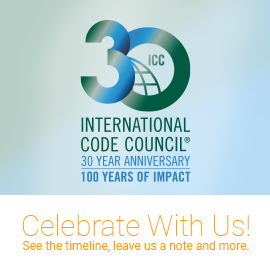
New metal building design guide has earth-shaking focus
![]() The earth may shake but metal buildings have a better chance of standing when built to earthquake requirements in the new Seismic Design Guide for Metal Building Systems.
The earth may shake but metal buildings have a better chance of standing when built to earthquake requirements in the new Seismic Design Guide for Metal Building Systems.
First Preventers—engineers, building officials and plan reviewers—prevent harm by ensuring compliance with building safety codes before a disaster occurs. One way to accomplish that objective is to check earthquake requirements when reviewing metal building plans.
Metal building systems are used in many areas of the United States. They are often an economical alternative for property owners because their streamlined building design reduces material waste and makes them easier and faster to build. It is important to address earthquake requirements in metal building systems even in regions of the country not known for rattles and shakes because building occupancy, soil type, and ground motion impact how a building is constructed. The guide puts all metal building seismic and design requirements in one handy resource.
The comprehensive, illustrated guide includes narratives about actual metal building systems, examples of realistic design situations, engineering diagrams and code commentary. It references the 2006 International Building Code, the American Society of Civil Engineers’ Minimum Design Loads for Buildings and Other Structures ASCE/SEI Standard 7-05. Structural steel design is based on the American Institute of Steel Construction’s Specification for Structural Steel Buildings Standard AISC 360-05 and the Seismic Provisions for Steel Buildings Standard AISC 341-05.
To purchase the Seismic Design Guide for Metal Building Systems (Item 9650S06, approx. 214 pages), visit the International Code Council website at www.iccsafe.org/seismicmetal2006 or call 1-800-786-4452.
“Incorporating seismic requirements for a specific location into a metal building can be a challenge for manufacturers because they have to prepare extensive calculations for each custom-designed building that rolls off the assembly line,” said SVP Mark Johnson. “This guide will help the engineers at the metal building manufacturer and the safety professionals in the building department make sure each metal building system meets the specific needs of the property owner’s building site and soil type, no matter where in the country the product will be located.”
“This is a valuable resource that has been updated to the most recent seismic design standards,” said W. Lee Shoemaker, Director of Research and Engineering for the Metal Building Manufacturers Association (MBMA), the organization that commissioned the guide. “It provides step-by-step guidance on the seismic design of metal building systems.”
The MBMA Seismic Design Guide Steering Committee developed the guide. Lead Author Robert E. Bachman, S.E. is Principal of R.E. Bachman Consulting. Richard M. Drake, S.E., is Director of Design Engineering for Fluor Corporation. Martin and W. Johnson, S.E. is Project Manager for ABS Consulting. Thomas M. Murray, Ph.D., P.E., is Montague Betts Professor of Structural Steel Design for the Virginia Polytechnic Institute and State University.
The International Code Council, a membership association dedicated to building safety and fire prevention, develops the codes used to construct residential and commercial buildings, including homes and schools. Most U.S. cities, counties and states choose the International Codes, building safety codes developed by the International Code Council.





